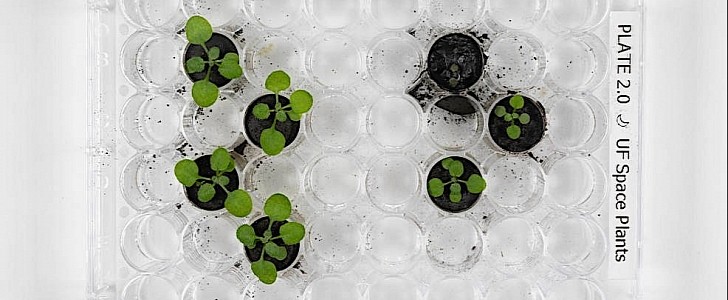For as long as people have been aware that the Moon is just another unspectacular ball of rock floating in the vastness of space, we knew it couldn’t support life of any kind. It has no atmosphere, no water, few nutrients in the soil, and it’s utterly dead.
But it doesn’t have to be. And it won’t, given how we humans are actively planning to colonize the place, so at least import life, if you will, will be present there. Not only on the surface, but possibly even in the soil.
Back in the days of the Apollo program, aside from the immediate goals of the lunar missions, astronauts were asked to bring back samples of the Moon back to Earth. These samples were stored with the goal of opening them in half of a century’s time, when technology would have advanced enough to make a variety of studies possible.
That time has come, and one such study is about the ability of lunar regolith to support plant growth. We already knew the soil had some poor traces of nutrients, but it wasn’t clear if it could support plant growth. Turns out it can, provided humans cheat a bit.
Using lunar samples taken by the crews of the Apollo 11, 12, and 17 missions, scientists with the NASA Biological and Physical Sciences (BPS) Division and the University of Florida managed to prove that. For the first time ever, says the agency, plants have been grown in lunar soil. We’re talking about Arabidopsis thaliana, a relative of cruciferous vegetables (mustard greens, broccoli, cauliflower, and Brussels sprouts).
For the research, a gram of regolith was used for each plant. The soil was fitted inside trays and then transported in terrarium boxes in a clean room. The cheating part consisted of scientists adding, on a daily basis, a nutrient solution to the soil.
The results were almost immediate: plants sprouted after just two days, and up until day six, they were the same vigorous blobs of green as the ones grown in control groups, in volcanic ash. After that, the stress of growing in an alien soil started to take its toll, but the discovery was already made: given the right circumstances, the lunar soil can support plant growth.
Such research is in its early stages, but given our plans for massive exploration of the solar system and the obsession with in-situ resource utilization (ISRU), it could open the doors to a semblance of agriculture capable of supporting off-world colonies.
You can have a look at all the details of the research by hitting this link.
Back in the days of the Apollo program, aside from the immediate goals of the lunar missions, astronauts were asked to bring back samples of the Moon back to Earth. These samples were stored with the goal of opening them in half of a century’s time, when technology would have advanced enough to make a variety of studies possible.
That time has come, and one such study is about the ability of lunar regolith to support plant growth. We already knew the soil had some poor traces of nutrients, but it wasn’t clear if it could support plant growth. Turns out it can, provided humans cheat a bit.
Using lunar samples taken by the crews of the Apollo 11, 12, and 17 missions, scientists with the NASA Biological and Physical Sciences (BPS) Division and the University of Florida managed to prove that. For the first time ever, says the agency, plants have been grown in lunar soil. We’re talking about Arabidopsis thaliana, a relative of cruciferous vegetables (mustard greens, broccoli, cauliflower, and Brussels sprouts).
For the research, a gram of regolith was used for each plant. The soil was fitted inside trays and then transported in terrarium boxes in a clean room. The cheating part consisted of scientists adding, on a daily basis, a nutrient solution to the soil.
The results were almost immediate: plants sprouted after just two days, and up until day six, they were the same vigorous blobs of green as the ones grown in control groups, in volcanic ash. After that, the stress of growing in an alien soil started to take its toll, but the discovery was already made: given the right circumstances, the lunar soil can support plant growth.
Such research is in its early stages, but given our plans for massive exploration of the solar system and the obsession with in-situ resource utilization (ISRU), it could open the doors to a semblance of agriculture capable of supporting off-world colonies.
You can have a look at all the details of the research by hitting this link.





